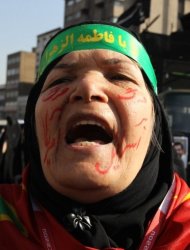1. Charles-Pierre-Paul, Marquis de Savalette de Langes (1745-1797)
Savalette de Langes was the son of Charles Pierre Savalette de Magnanville (1713-1790) – intendant of the Generality of Tours (1745) and Keeper of the Royal Treasury from 1756 to 1788 – and Marie-Émilie Joly de Choin (1726-1776), the daughter of a fermier général. In 1773, like his father, Savalette de Langes became a Keeper of the Royal Treasury; 1790/91, Captain of the Paris National Guard in the battalion of Saint Roch and aide-de-campe to Marquis de Lafayette (1757-1834).
1
Gardes du Trésor royal (i.e. keeper of the royal treasury) was a heredity title. On the significance of the post, Roland Mousnier writes:
The highest-ranking receveur-payeurs were the two gardes du Trésor royal. According to the edict of June 1748 this office was worth 1,200,000 livres. They earned 5 percent of the official value of the office in salary plus 12,000 additional livres when they were actually on duty; they also received 1,500 livres in salary for their work on the council and 60,000 livres, increased by Necker to 85,000, to cover the wages and expenses of their commis. These offices were family property. In 1749 Charles-Pierre Savalette de Magnanville took the first of the two posts. In 1773 his son, Charles-Pierre-Paul Savalette de Langes became his assistant and designated heir. In November 1785 they switched positions, Langes becoming the titulary of the post and Magnanville his assistant and designated heir. Both men were maîtres des requêtes and conseillers d’Etat. The father was for a time intendant of Tours. The family could claim three degrees of nobility and thus came close, in principle, to the gentilhommerie.2
One of the most active and influential Masons of his time, Savalette de Langes was first initiated in 1766 at the Lodge “L’Union Indivisible” in Lille, he was the founder of the Paris Lodge “
Les Amis Réunis” (1771),
Regime of the Philalèthes (1773), and convoked the Philalèthes Convents of Paris in 1785 and 1787. From the beginning Savalette was on the side of the Duke de Chartres (future Duke d’Orléans) for the creation of the Grand Orient, and after this was accomplished (1773) Savalette subsequently became its Grand Officer and Archivist. He was also a member of the Paris Lodge “L’Olympique de la Parfaite Estime” from 1783-88, the founder of “La Société Olympique” in 1785, and a member of the Paris Lodge “Centre des Amis” in 1793.
3
Permanent, official correspondence between the Illuminati and Savalette’s Amis Réunis was established in 1784. Friedrich Wilhelm Ludwig von Beulwitz (1755-1829), the head of the Rudolstadt Illuminati was initiated into the Amis Réunis in 1784, while visiting Paris, and received into the 11th class of the Philalèthes. Another Illuminatus, Sigismund Falgera (1752-1790) was already initiated into the Amis Réunis in 1784 (to 1789) and was appointed the official Illuminati correspondent/liaison to the Paris Lodge.
4 Yet even before this, other Illuminati were simultaneously members of the Amis Réunis – Count Kolowrat, for one (see below) – and it would be hard to believe that they hadn’t at least tried to “Illuminize” this most important Lodge in Paris. In this regard, about all we can safely say is that there remains a lack of documentation about any successes the Illuminati may have had in France
before 1787.
The famous trip Johann Joachim Christoph Bode (then head of the Illuminati) had made from Weimar to Paris in 1787 has been for over 200 years a source of speculation. It turns out, however, that Bode had kept a travel journal that was only recently rediscovered and published for the first time in 1994. This, along with a letter Bode sent to Illuminatus Christian, Prince of Hessen-Darmstadt (1763-1830) at precisely the same time, includes the explicit admission that the Master of the Amis Réunis and the Philalèthes, Savalette de Langes, after over a month of meetings and talks with Bode, was persuaded to join the Illuminati. He was initiated on August 1st, 1787, followed three days later by Jean-Baptiste-Marie-Adéodat Taillepied de Bondy (1741-1822) and Alexandre-Louis Roëttiers de Montaleau (1748-1808). This hitherto unknown secret Lodge of the Illuminati in Paris had decided to operate under another name –
Philadelphes. Little else is known save the pledge to work toward the “healthy reason” of the politically inclined Illuminati. Additional Amis Réunis recruits during Bode’s visit were Jean-Baptiste Le Sage (1757/67-1838) and Francois-Antoine Lemoyne Daubermesnil (1748-1802).
5
In the letter to Christian von Darmstadt, Bode outlined some specifics about how the Illuminati would operate in France:
- Correspondences should be marked with a cross. In this way, out of politeness and respect, rejections from the censors would be few;
- The utilization of a standard Masonic cipher, but for the ninth key, the word St. … [a gap in the text, perhaps deliberately] from an agreed upon almanac;
- Adopt the name Philadelphes instead of Illuminati, and in place of Minervals, Preparatory class or Aspirants. One of the reasons, Bode says, is that the Amis Réunis already have the class of Philalèthes for their final grade. And finally, for those adverse to mysterious societies, a beneficial assembly under the name Philanthropes.
Less than a year after Bode’s visit an organizational transformation did in fact take place at the Amis Réunis: a new Chapter was instituted, which included only one-fifth of the total number of Amis Réunis members. There were seventy-six members, according to Hermann Schüttler, of which eleven were known Illuminati. Of the eleven, however, he only lists ten: Daubermesnil, Le Sage, Roëttiers de Montaleau, Savalette de Langes, Taillepied de Bondy, Ludwig X. Landgrave von Hessen-Darmstadt (1753-1830), Friedrich Rudolf Salzmann (1749-1820), Friedrich Tiemann (1743-1802) and Russian envoy Count
Alexander Sergeyevich Stroganov (1733-1811). Among others, those who also belonged to the Chapter were the banker brothers Louis-Daniel Tassin (1742-1794) and Gabriel Tassin de l’Étang (1743-1794), Jean-Pierre Louis de Beyerlé (1740-1806) and François-Marie Marquis de Chefdebien d’Armissan (1753-1814). Schüttler rightly described it as a “lodge within a lodge within a lodge” (Amis Réunis -> Illuminati/Philadelphes -> the new 1788 Chapter). About the nature of its work nothing is known, only that it lasted until 1792 and had dwindled to 22 members.
6
The significance of this and other evidence, as it relates to the conspiracy thesis of the French Revolution, is summarized by Porset:
The register of the Amis Réunis to which I have already referred, specifies, in 1789, which Brothers called for the recommencement of the Convent of Paris on the occasion of the reunion of the Estates-General…Montmorency-Luxembourg, who fled to England on the first day of the Revolution, was a member of the Philalèthes, but he was not a revolutionary. Yet in a very interesting letter written at that time, to Chataigner, he blames the Philalèthes and explains that he never wanted to give in to their pressure, but he adds that he didn’t want to betray them - whom he respected; and finally, Chaillon de Jonville, deputy Grand Master of the Grand Lodge, thus the institution which preceded the Grand Orient, denounced the Philadelphes in a text which appeared in 1789; he held them responsible for the revolutionary disturbances. What more can be said? These Brothers of the foremost Lodges, weren’t they in a position to speak [candidly] about what they had experienced?7
Professor Porset, himself a Grand Orient Mason, thus ends his erudite work on the Philalèthes by reluctantly admitting that the 18th Century contemporary “anti-masonic” Illuminati conspiracy theorists, such
as Barruel,
Starck,
Lefranc, and
Hervás y Panduro (though Robison might be mentioned in this company as well) were better-informed than has previously been suspected.
8
Another thing to keep in mind is that the Mesmerists in France at the time, of which Savalette de Langes was an adherent, member, and associate, were far from being harmless mystics. The formidable historian, Robert Darnton has shown conclusively that the clubs and Lodges of the Mesmerists, before, during, and after the Revolution, were the premiere gathering places for revolutionaries and radical pamphleteers.
9 As Porset has summarized:
…it suffices to remark that Mirabeau, Lafayette, Duport, Brissot, Carra, Bergasse, the Rolands, d’Epremesnil, Desmoulins, Danton, Robespierre, and Savalette de Langes, were all Masons and frequented the same milieu, – and that this milieu, the Masonic-Mesmerists and Illuminists, played a decisive role before and during the Revolution.
10
Read More

 對伊動武?以色列:決定在我
對伊動武?以色列:決定在我